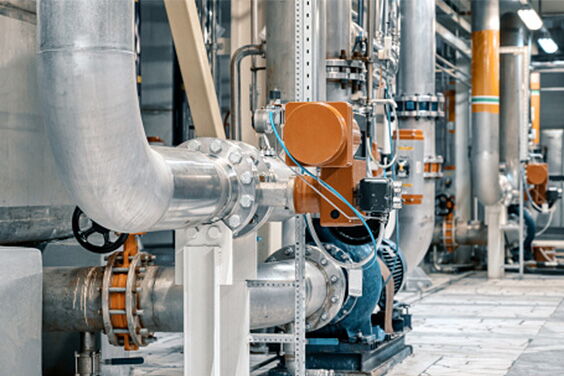What Affect Control Valve Performance in Chemical Production
In chemical production processes with high levels of automation, control valves play a crucial role as terminal execution devices for automatic control systems. However, the sensitivity of control valves directly impacts the quality of control systems. Therefore, it is imperative to systematically analyze the factors affecting the safe operation of control valves and propose effective countermeasures for daily maintenance.
1. Sticking Issues
Sticking is a common problem encountered with control valves, especially during the initial operation of newly commissioned systems or after major maintenance. This issue often arises due to obstructions such as welding slag or rust in the piping, which hinder smooth flow through the throttling or guiding sections. Additionally, over-tightened packing during valve maintenance can increase friction, leading to phenomena where small signals fail to actuate while large signals overact.
Fault Handling: Rapidly opening and closing the bypass line or control valve can dislodge debris from these areas. Alternatively, applying force to rotate the valve stem using pliers can overcome sticking. If these methods fail, disassembly may be necessary.
2. Leakage Problems
Leakage is a significant concern in control valve systems, as it compromises process integrity, safety, and efficiency. Various types of leakage can occur, each requiring specific attention and mitigation strategies.
- Internal Leakage: Inadequate valve stem length can result in insufficient contact between the valve core and seat, leading to internal leakage. The solution involves adjusting the valve stem length to ensure proper contact.
- Packing Leakage: Uneven contact between packing and valve stem due to plastic deformation during installation can lead to packing leakage, exacerbated by the effects of high temperature, pressure, and corrosive fluids. Solutions include chamfering the top of the packing chamber, placing corrosion-resistant metal rings at the bottom, and precision machining of metal surfaces in contact with the packing.
- Valve Core and Seat Deformation Leakage: Casting or forging defects during valve production can lead to corrosion-enhanced erosion, resulting in valve core and seat leakage. Proper material selection and quality control during production are crucial to mitigate this issue.
3. Oscillation Problems
Oscillation may result from insufficient spring stiffness, resonance between valve selection frequency and system frequency, or excessive vibration of piping or bases. Solutions include increasing spring stiffness, changing to different valve structures, and adding support to piping systems.
4. Valve Positioner Malfunctions
alve positioners are crucial components in control valve systems, responsible for accurately positioning the valve according to control signals. Several types of malfunctions may arise.
- Conventional Positioners: Mechanical force balance principles used in conventional positioners are susceptible to temperature and vibration effects, as well as blockage due to dust or dirt. Consequently, they may exhibit fluctuations in valve operation.
- Smart Positioners: Smart positioners, while overcoming some drawbacks of conventional ones, pose challenges in emergency shutdown scenarios due to the risk of unintended movements. Frequent testing is necessary to ensure their reliability and usability.
In conclusion, control valves are vital components in chemical process control systems, but their frequent failure issues must be promptly and effectively addressed. Maintenance personnel should have a comprehensive understanding of various failure types and their solutions, implementing appropriate preventive measures to ensure the safe operation and stability of control valves in production processes.

